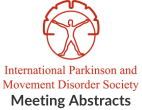Treatment of cervical dystonia using shorter incobotulinumtoxinA injection intervals improves patient-reported outcomes in those with inadequate benefits from standard intervals
Objective: To assess the impact of 2 different injection schedules of incobotulinumtoxinA on patient-reported assessments in cervical dystonia (CD). Background: There is individual variation in…A novel ANO3 variant associated with generalized dystonia in an elderly woman
Objective: To report a case of dystonia that adds to the growing body of literature regarding the genotypic variants associated with the ANO3 gene implicated…Gait Dysfunction in Blepharospasm
Objective: Characterizing gait in blepharospasm patients. Background: Blepharospasm ranges from frequent blinking to forced eye closure potentially causing functional blindness that can impair walking. Gait…Blepharospasm – a network disorder
Objective: We present a case with apraxia of eyelid opening, orbicularis oculi spasms, increased blinking, which falls within the new paradigm that defines blepharospasm, that…Diagnostic accuracy in an incidence cohort of Parkinson’s disease
Objective: To determine the accuracy of clinical diagnosis and research diagnostic criteria in a population-representative cohort of Parkinson's disease (PD) against a neuropathological gold standard…Characteristics and outcomes of Parkinson’s disease individuals hospitalized with COVID-19 in a New York City hospital system
Objective: To determine the clinical characteristics and outcomes in hospitalized individuals with Parkinson's disease (PD) infected with COVID-19 Background: The COVID-19 pandemic has caused worse…Altered neuroplasticity in patients with functional movement disorders.
Objective: To compare variations in repetitive paired associative stimulation (r-PAS)-induced cortical plasticity among patients with functional movement disorders (FMD) and healthy controls, measuring transcranial magnetic…Whole-Exome Sequencing in a Movement Disorders Clinic
Objective: To evaluate the diagnostic utility of whole-exome sequencing (WES) in select patients with a movement disorder. Background: Many patients with suspected genetic movement disorders…Using Human Neural Tissue Methylation to Decipher Epigenetic Characteristics and Cell Type Pathologies in Huntington’s Disease
Objective: This study combines methylation data from the two largest EWAS studies in Huntington's Disease (HD) human brain tissue [1,2]. Combined, this study yields the…Characterizing US Healthcare Delivery in Huntington’s Disease (HD)
Objective: The HD-Net research survey aimed to assess care patterns among practice types in the U.S., to identify gaps in the provision of HD care.…
- « Previous Page
- 1
- …
- 70
- 71
- 72
- 73
- 74
- …
- 132
- Next Page »
